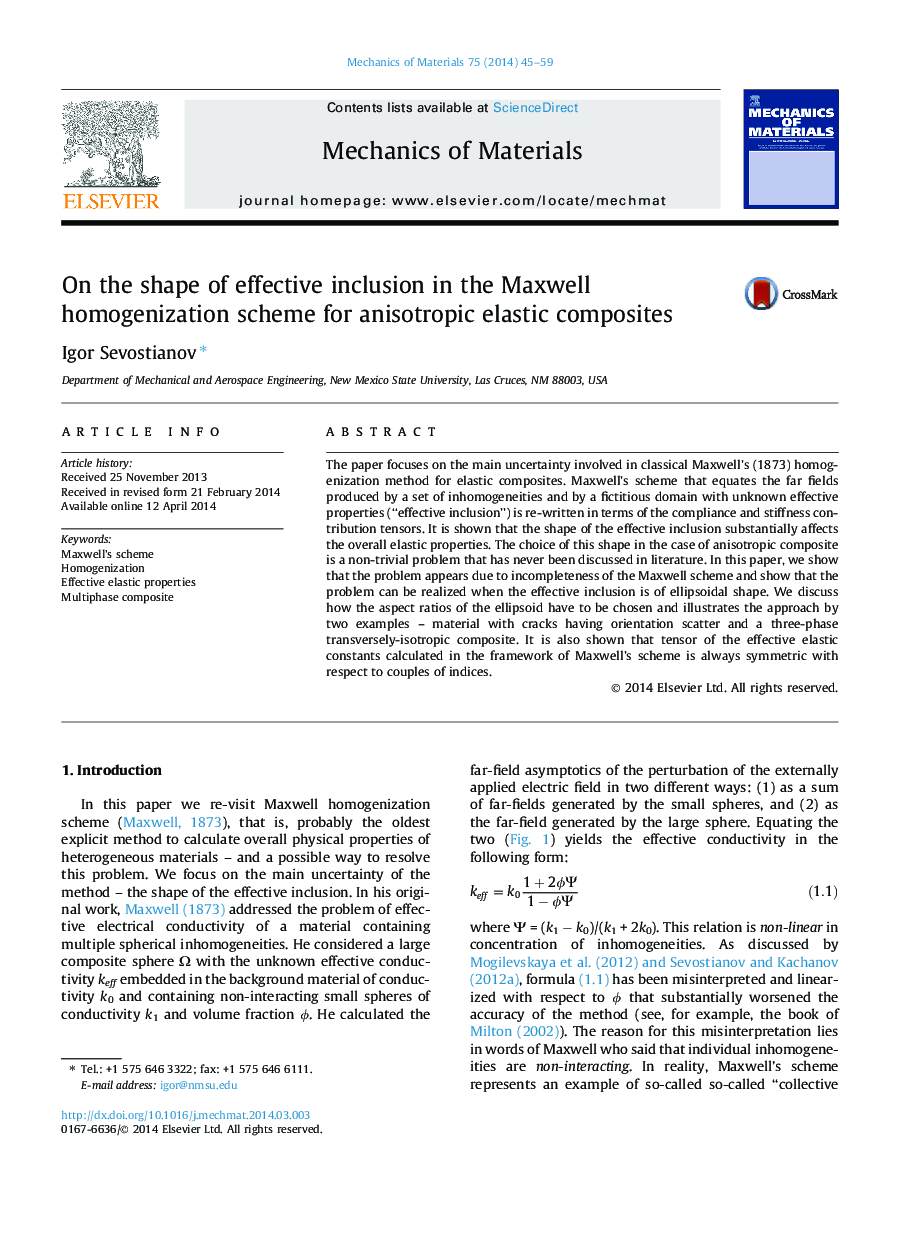| Article ID | Journal | Published Year | Pages | File Type |
|---|---|---|---|---|
| 802792 | Mechanics of Materials | 2014 | 15 Pages |
•Maxwell’s scheme is re-written in terms of the compliance and stiffness contribution tensors.•It is shown that Maxwell scheme always produces symmetric tensors of elastic constants.•It is shown that the shape of the effective inclusion substantially affects the overall elastic properties.•The paper proposes an approach to choose the appropriate shape of the effective inclusion.
The paper focuses on the main uncertainty involved in classical Maxwell’s (1873) homogenization method for elastic composites. Maxwell’s scheme that equates the far fields produced by a set of inhomogeneities and by a fictitious domain with unknown effective properties (“effective inclusion”) is re-written in terms of the compliance and stiffness contribution tensors. It is shown that the shape of the effective inclusion substantially affects the overall elastic properties. The choice of this shape in the case of anisotropic composite is a non-trivial problem that has never been discussed in literature. In this paper, we show that the problem appears due to incompleteness of the Maxwell scheme and show that the problem can be realized when the effective inclusion is of ellipsoidal shape. We discuss how the aspect ratios of the ellipsoid have to be chosen and illustrates the approach by two examples – material with cracks having orientation scatter and a three-phase transversely-isotropic composite. It is also shown that tensor of the effective elastic constants calculated in the framework of Maxwell’s scheme is always symmetric with respect to couples of indices.
